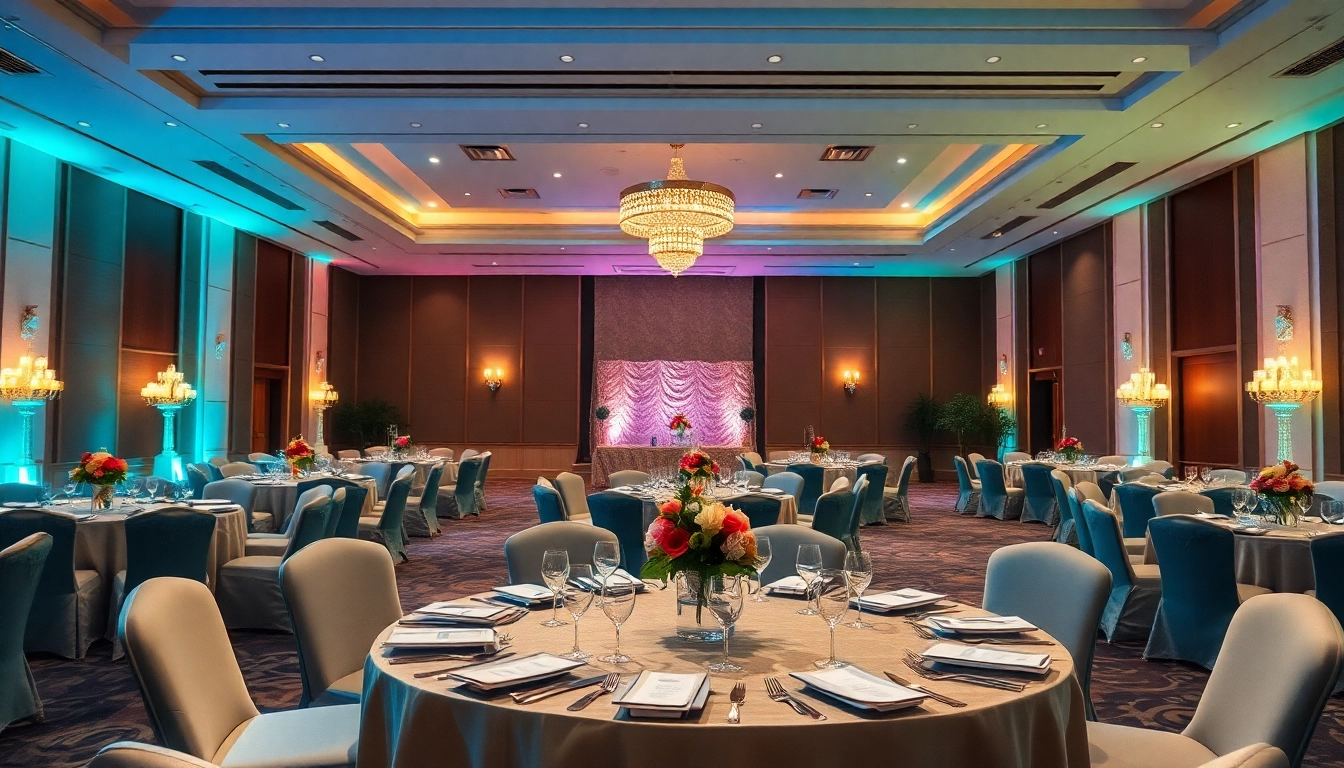Understanding Indoor Events
Defining Indoor Events
Indoor events encompass a wide range of activities that take place within enclosed venues, including conferences, trade shows, exhibitions, parties, performances, workshops, and corporate meetings. These events can cater to diverse audiences, from business professionals seeking networking opportunities to families celebrating special occasions. The spatial constraints of indoor locations allow for a controlled environment, which can be adapted to meet specific objectives, aesthetics, and atmospheres. The flexibility in design and arrangement enables event planners to create unique experiences tailored to the preferences of attendees. This versatility makes indoor events a significant choice for various organizations and individuals.
Importance of Indoor Events
The significance of indoor events cannot be overstated. They facilitate interaction and knowledge exchange in a visually appealing setting. Indoor environments provide a respite from the uncertainties of weather and external distractions, ensuring a more focused and engaging experience. They can host larger crowds without the logistical concerns of outdoor venues, such as security and crowd control. Furthermore, indoor events are essential for businesses looking to enhance brand visibility, network with other professionals, and generate leads. Organizations leverage these gatherings to conduct market research, showcase products, and build relationships that can lead to long-term profitability.
Trends in Indoor Events
As the landscape of event planning evolves, so do the trends influencing indoor events. Today, sustainability plays a crucial role, with many planners opting for eco-friendly materials and practices to minimize the carbon footprint of their activities. Health and safety concerns have also gained prominence, prompting event organizers to implement stricter hygiene protocols and social distancing arrangements. Technological integration is another growing trend, with virtual and hybrid models becoming more commonplace, allowing remote attendees to participate meaningfully. Additionally, personalization and attendee engagement are now priority areas, with custom experiences based on preferences or past attendance shaping how events are conceived and executed.
Planning Successful Indoor Events
Key Considerations for Indoor Events
Planning a successful indoor event necessitates meticulous attention to detail. Key considerations include understanding the target audience, establishing clear goals, and determining a realistic budget. A thorough assessment of the venue capacity and layout safety must also account for accessibility and emergency exits. Additionally, the selection of date and time significantly affects attendance levels, requiring planners to consider potential conflicts and internal calendars within the target group. Events must also offer value, be it through educational sessions, entertainment, or networking opportunities, ensuring attendees leave feeling satisfied and fulfilled.
Selecting the Perfect Venue
The choice of venue can make or break an indoor event. Factors such as size, location, ambiance, and amenities play a crucial role. Venues should align with the theme and objectives of the event while providing the necessary facilities, such as audio-visual equipment, Wi-Fi access, and catering options. Accessibility is vital, ensuring participants can reach the venue without hassle. A visit to prospective sites will help planners gauge the atmosphere, discover unique spaces, and identify strengths and weaknesses. Consider venues that can incorporate branding elements, providing opportunities for a cohesive message.
Crafting the Event Agenda
An effective event agenda is central to keeping attendees engaged and ensuring a smooth flow of activities. A well-structured timetable should balance presentations, discussions, and breaks to prevent fatigue. Introducing speakers or interactive sessions first creates an energized environment. It’s also beneficial to allocate time for networking; this can enhance professional relationships and collaborations. Clear communication with all stakeholders is essential, as arranging logistics, catering, and technical needs will depend on the outlined schedule. Flexible adjustment of the agenda may be necessary to meet the real-time dynamics during the event.
Creating an Inviting Atmosphere
Choosing Appropriate Décor for Indoor Events
The décor of an indoor event plays a pivotal role in shaping attendees’ first impressions and overall experience. Selected themes should resonate with the event’s purpose, incorporating signage, color schemes, and branding elements that reflect the organization’s identity. Use of floral arrangements, centerpieces, and thematic installations can create an inviting ambiance. Additionally, venues can enhance aesthetics through blank canvases such as walls to hang artwork or implement interactive displays tailored for the audience. A coordinated décor team ensures harmony across different event components, resulting in a cohesive and professional look.
Lighting Techniques to Enhance the Environment
Lighting serves as a powerful tool in indoor events, influencing ambiance, mood, and even behavior. Strategic lighting can highlight specific areas, such as stages or product displays, while also creating focal points that guide attendees throughout the space. Utilizing dimmable lighting allows for flexibility—transitioning from warm, inviting tones during networking sessions to brighter, more focused lighting during presentations. Incorporating LED screens can introduce dynamic visuals to keep the audience engaged. Consider varying light textures, colors, and intensities to develop a multi-layered lighting scheme that captivates guests.
Seating Arrangements for Comfort and Flow
The arrangement of seating significantly impacts both comfort and interaction at indoor events. Depending on the event’s purpose, seating can be structured in various ways: theater-style for presentations, banquet-style for dinners, or interactive round tables for collaborative discussions. Factors such as comfort, accessibility, and social dynamics should guide seating plans. Planners must consider flow; aisles should be clear to allow movement, and exits should be easily accessible to prevent bottlenecks. Feedback from previous attendees can offer insights into preferred seating arrangements, further tailoring the event environment.
Engaging Attendees at Indoor Events
Interactive Activities to Boost Participation
Attendee engagement is critical in making indoor events successful and memorable. Incorporating interactive activities such as polls, Q&A sessions, and workshops fosters participation. Incorporating gamification—like contests or scavenger hunts—encourages interaction and friendly competition among attendees. Utilizing breakout sessions allows smaller groups to dive deeper into topics, enhancing discussion quality. Engaging an audience with hands-on opportunities, such as product demonstrations or workshops, can also ensure a dynamic event where attendees feel like integral participants rather than passive observers.
Effective Communication Strategies During Indoor Events
During indoor events, effective communication can significantly influence the overall success of the engagement. Clear messaging through signage, schedules, and apps keeps participants informed and oriented. Event organizers should establish a reliable method for sharing updates, whether through direct announcements, printed materials, or mobile applications. Encouraging open communication through designated channels for feedback or questions during the event fosters transparency and allows for real-time adjustments. Clear and approachable facilitators are essential, helping attendees navigate schedules and activities while remaining accessible for assistance.
Utilizing Technology for Enhanced Engagement
Technology serves as a pivotal player in enhancing engagement during indoor events. Implementing event management software streamlines registration, ticket sales, and attendee tracking, minimizing logistical challenges. Live streaming and recording sessions make it easier for remote participants to engage with event content. Social media integration allows guests to share experiences in real time, further promoting event visibility. Use of augmented reality (AR) and virtual reality (VR) can create immersive experiences that captivate and retain attention. Combining these technologies not only enriches the participant experience but also boosts overall event value.
Measuring the Success of Indoor Events
Feedback Mechanisms for Improvement
Collecting feedback is essential to understanding attendee perceptions and identifying areas for improvement. Surveys, both digital and paper-based, should be distributed after the event to gain insights into various aspects such as content, logistics, and overall satisfaction. Hosting focus groups can also provide qualitative feedback that statistics can’t capture. Key questions to consider include the value of the content, overall engagement, and suggestions for future events. Establishing a systematic approach to feedback collection will allow planners to work towards continuous improvement in subsequent indoor events.
Key Performance Indicators for Indoor Events
Measuring the success of indoor events relies on key performance indicators (KPIs) that align with the objectives established during the planning phase. Common KPIs include attendance rates, engagement levels measured through interactions, time spent at the event, and feedback ratings. Analyzing these metrics helps gauge the effectiveness of event strategies, highlighting strengths and revealing opportunities for improvement. Additional metrics can include social media impressions, lead generation for businesses, and post-event follow-up outcomes, such as conversion rates for sales teams. Setting benchmarks allows for comparative analysis across multiple events.
Post-Event Analysis and Insights
The final step in the event planning cycle is conducting a post-event analysis. This phase allows teams to reflect on successes and challenges. Gathering all event stakeholders—planners, facilitators, and even select attendees—can lead to candid discussions about what worked and what didn’t. Documenting lessons learned ensures knowledge retention for future events. Trends observed during the event, revealed through attendee feedback and KPI analysis, should inform decision-making for upcoming indoor events. A comprehensive report summarizing findings can help streamline processes and set the stage for even more successful gatherings in the future.

